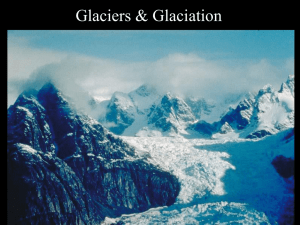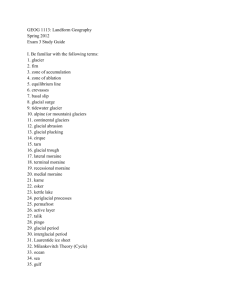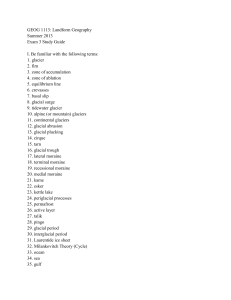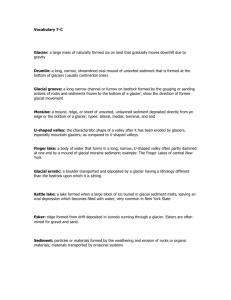IPC Test 1
advertisement
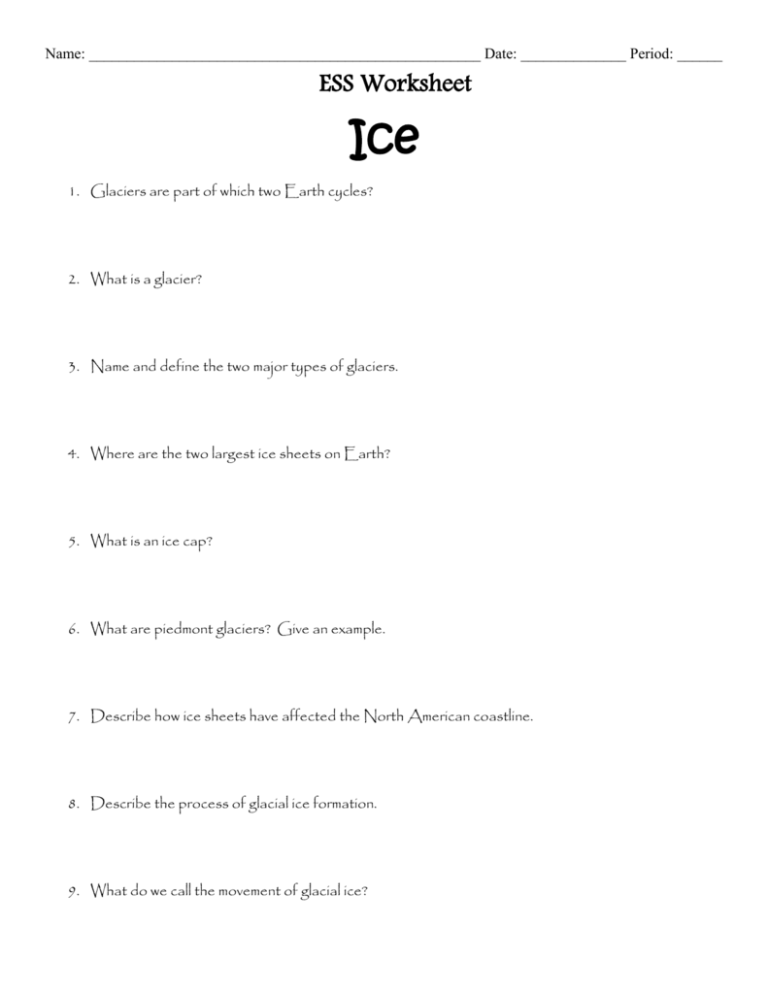
Name: ____________________________________________________ Date: ______________ Period: ______ ESS Worksheet Ice 1. Glaciers are part of which two Earth cycles? 2. What is a glacier? 3. Name and define the two major types of glaciers. 4. Where are the two largest ice sheets on Earth? 5. What is an ice cap? 6. What are piedmont glaciers? Give an example. 7. Describe how ice sheets have affected the North American coastline. 8. Describe the process of glacial ice formation. 9. What do we call the movement of glacial ice? 10. What are the two basic types of glacial flow? 11. Describe the process of plastic flow. 12. Describe the movement of glaciers referred to as slipping (sliding.) 13. Describe the zone of fracture in a glacier. 14. What are crevasses and how are they created? 15. In what areas do glaciers form? 16. Describe the zone of accumulation of a glacier. 17. Describe the zone of wastage of a glacier. 18. What is a ”snowline?” 19. What determines whether a glacier advances, retreats, or remains stationary? 20. Define the term “glacial budget.” 21. What effect does glacial abrasion have on the landscape? 22. Define the following terms concerning landforms created by glacial erosion: glacial troughs hanging valleys cirques arêtes horns fiords 23. Discuss a glacier’s role in the transportation and deposition of sediment. 24. Define the term “drift” as it applies to materials transported by glaciers. 25. Define the term “till.” 26. What is “stratified drift?” 27. What is a “glacial erratic and how must they have been derived?” 28. What are “moraines?” 29. Identify the following types of moraines and indicate how each forms: Lateral moraine End moraine Medial moraine Ground moraine 30. In what part of the United States is the Ronkonkoma moraine found? How old is it? 31. Identify the following glacial depositional features: outwash plains and valley trains kettles. drumlins eskers kames 32. When did the Ice Age begin? In which epoch? How much of Earth’s land area was covered in ice? 33. Discuss the effects of Ice Age glaciers on the following: migration of animals and plants rebounding of the continental crust sea levels climate change 34. What must a successful theory for the causes of glaciation account for? 35. What are some proposed possible causes for glaciation? 36. What is the Earth orbit hypothesis for glaciation of Milutin Milankovitch based upon? 37. Milankovitch formulated a comprehensive mathematical model for glaciation based upon what key elements?





